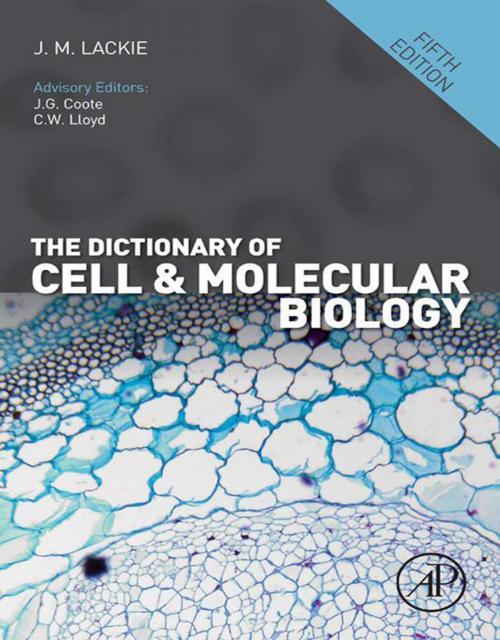The Dictionary of Cell and Molecular Biology
Nonfiction, Science & Nature, Science, Biological Sciences, Cytology, Other Sciences, Molecular Biology| Author: | ISBN: | 9780123849328 | |
| Publisher: | Elsevier Science | Publication: | December 31, 2012 |
| Imprint: | Academic Press | Language: | English |
| Author: | |
| ISBN: | 9780123849328 |
| Publisher: | Elsevier Science |
| Publication: | December 31, 2012 |
| Imprint: | Academic Press |
| Language: | English |
The Dictionary of Cell and Molecular Biology, Fifth Edition, provides definitions for thousands of terms used in the study of cell and molecular biology. The headword count has been expanded to 12,000 from 10,000 in the Fourth Edition. Over 4,000 headwords have been rewritten. Some headwords have second, third, and even sixth definitions, while fewer than half are unchanged. Many of the additions were made to extend the scope in plant cell biology, microbiology, and bioinformatics. Several entries related to specific pharmaceutical compounds have been removed, while some generic entries (“alpha blockers, “NSAIDs, and “tetracycline antibiotics, for example), and some that are frequently part of the experimentalist’s toolkit and probably never used in the clinic, have been retained. The Appendix includes prefixes for SI units, the Greek alphabet, useful constants, and single-letter codes for amino acids.
- Thoroughly revised and expanded by over 20% with over 12,000 entries in cellular and molecular biology
- Includes expanded coverage of terms, including plant molecular biology, microbiology and biotechnology areas
- Consistently provides the most complete short definitions of technical terminology for anyone working in life sciences today
- Features extensive cross-references
- Provides multiple definitions, notes on word origins, and other useful features
The Dictionary of Cell and Molecular Biology, Fifth Edition, provides definitions for thousands of terms used in the study of cell and molecular biology. The headword count has been expanded to 12,000 from 10,000 in the Fourth Edition. Over 4,000 headwords have been rewritten. Some headwords have second, third, and even sixth definitions, while fewer than half are unchanged. Many of the additions were made to extend the scope in plant cell biology, microbiology, and bioinformatics. Several entries related to specific pharmaceutical compounds have been removed, while some generic entries (“alpha blockers, “NSAIDs, and “tetracycline antibiotics, for example), and some that are frequently part of the experimentalist’s toolkit and probably never used in the clinic, have been retained. The Appendix includes prefixes for SI units, the Greek alphabet, useful constants, and single-letter codes for amino acids.
- Thoroughly revised and expanded by over 20% with over 12,000 entries in cellular and molecular biology
- Includes expanded coverage of terms, including plant molecular biology, microbiology and biotechnology areas
- Consistently provides the most complete short definitions of technical terminology for anyone working in life sciences today
- Features extensive cross-references
- Provides multiple definitions, notes on word origins, and other useful features















